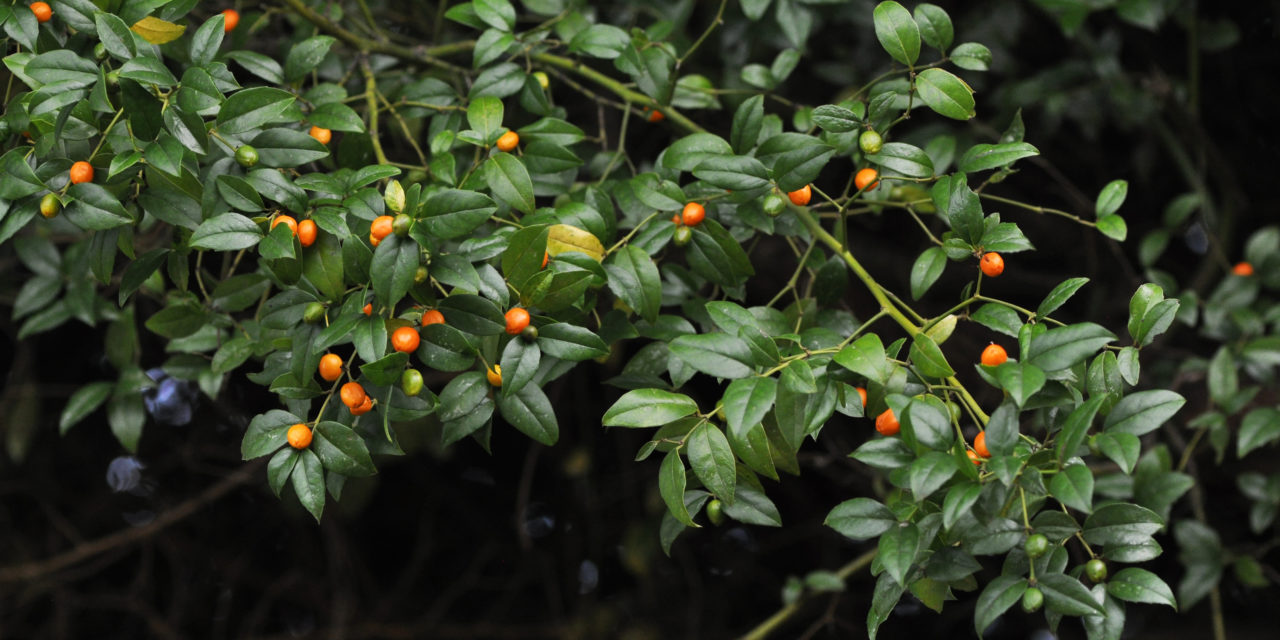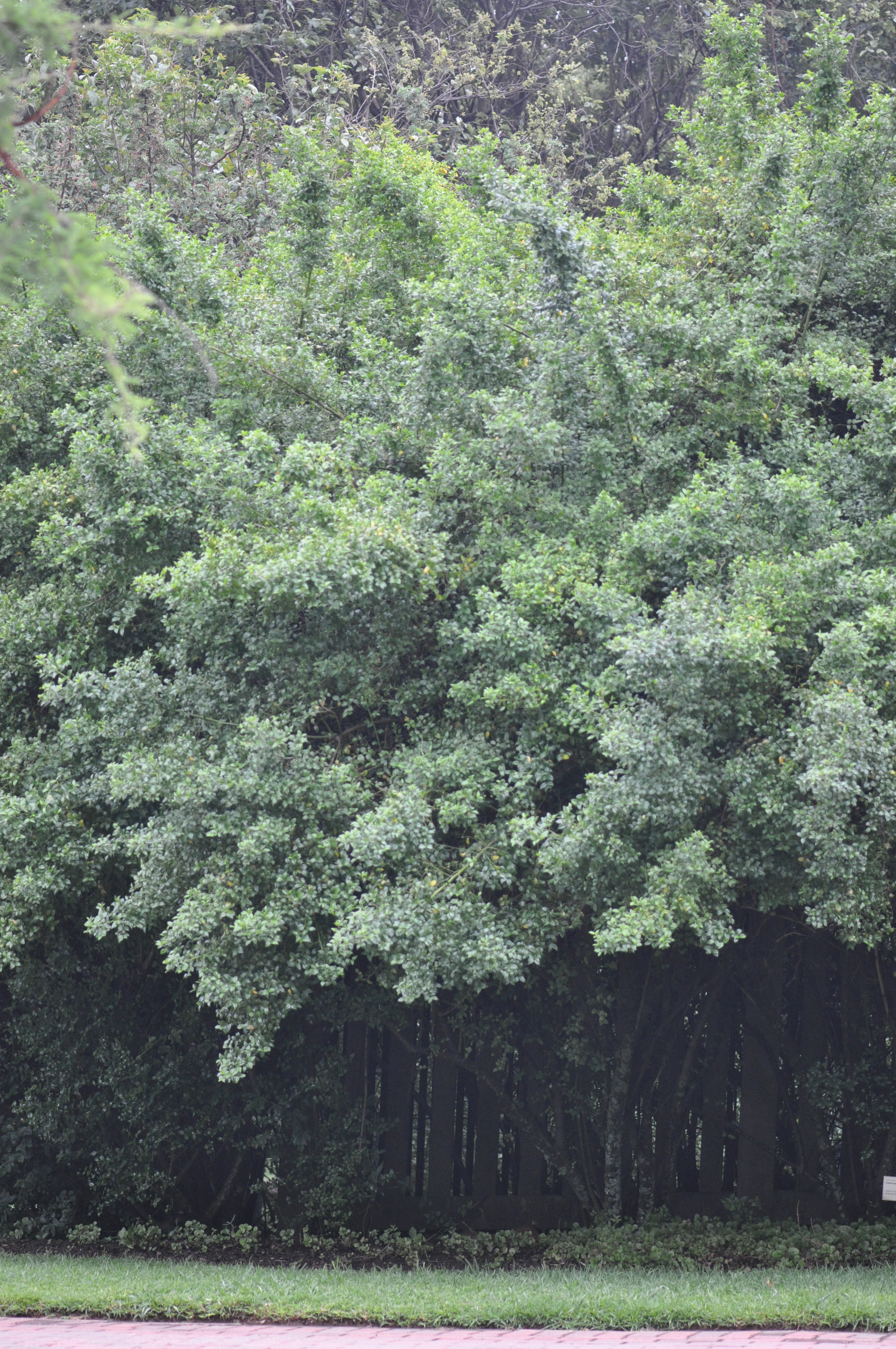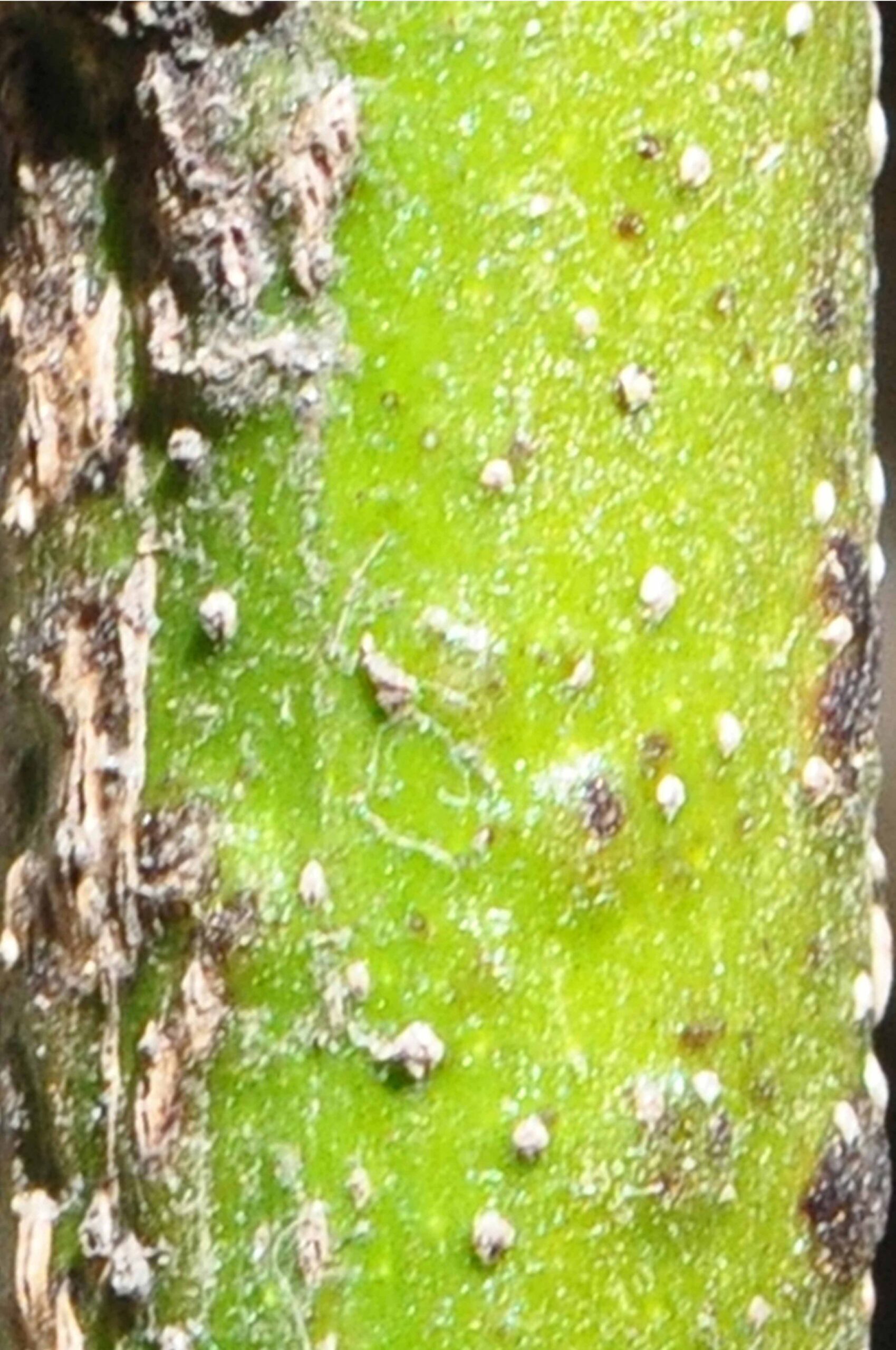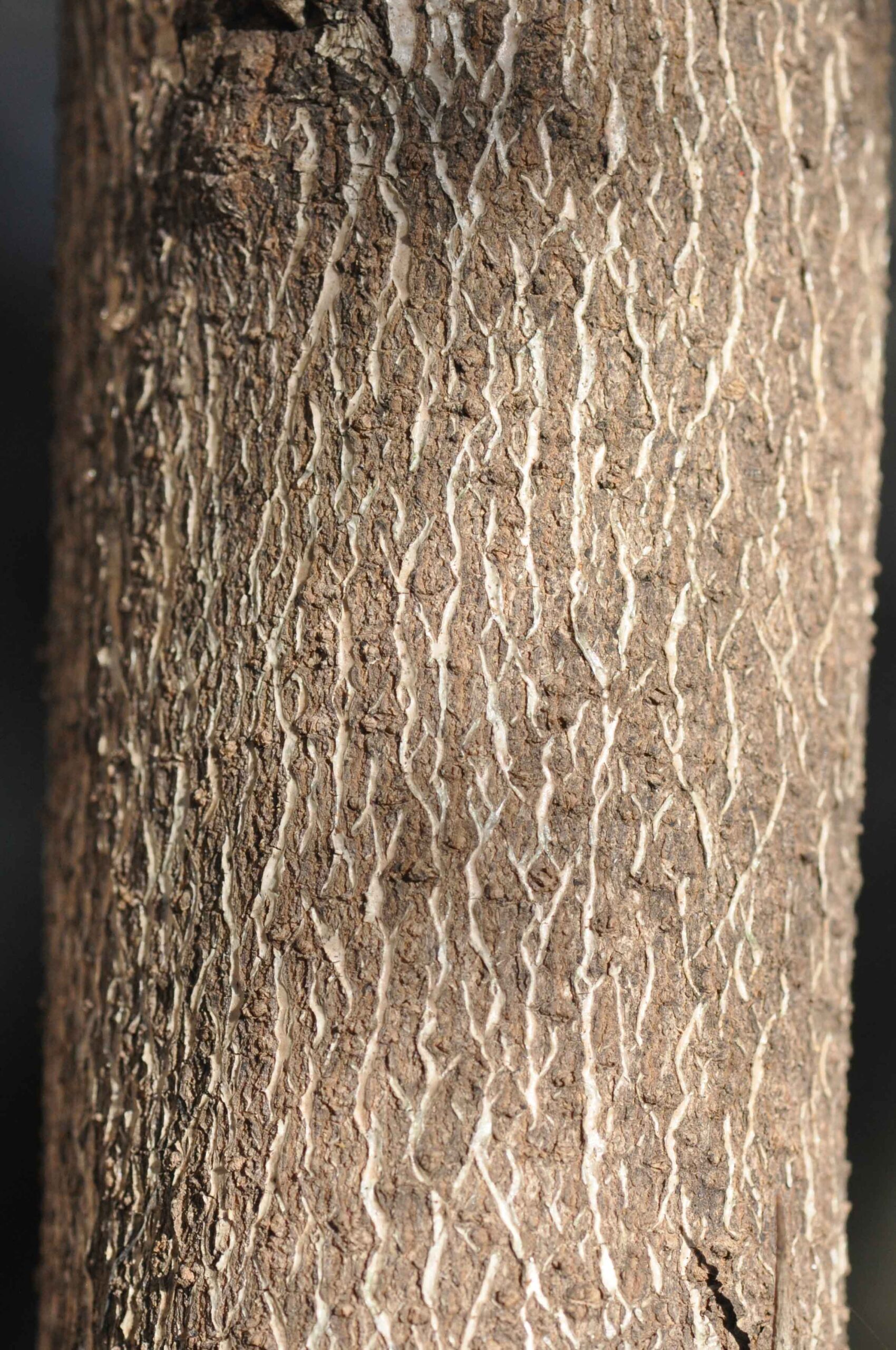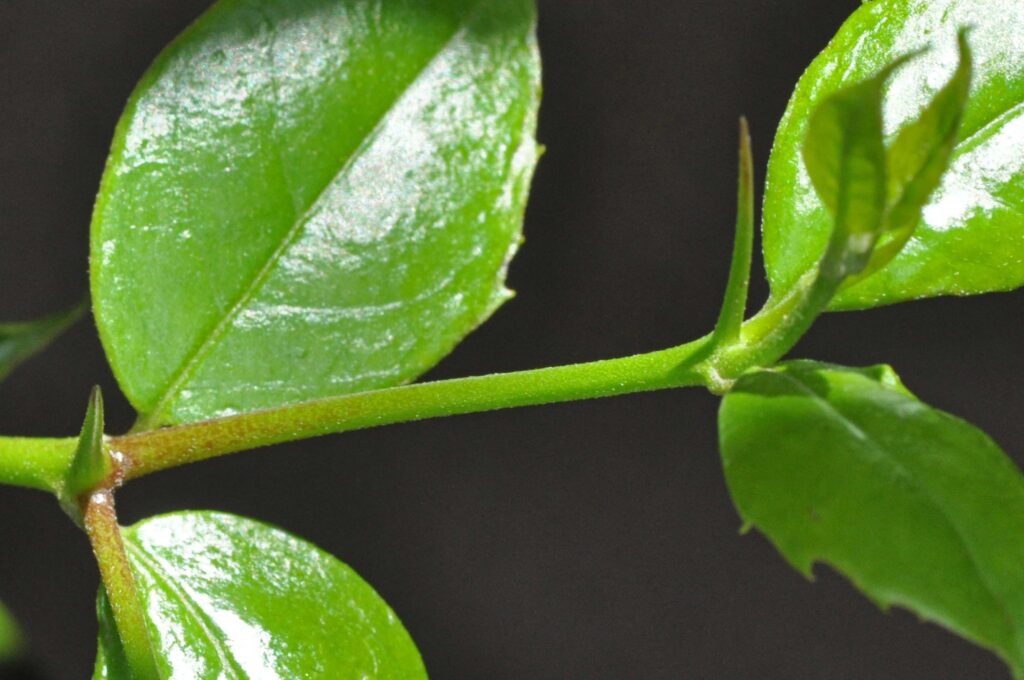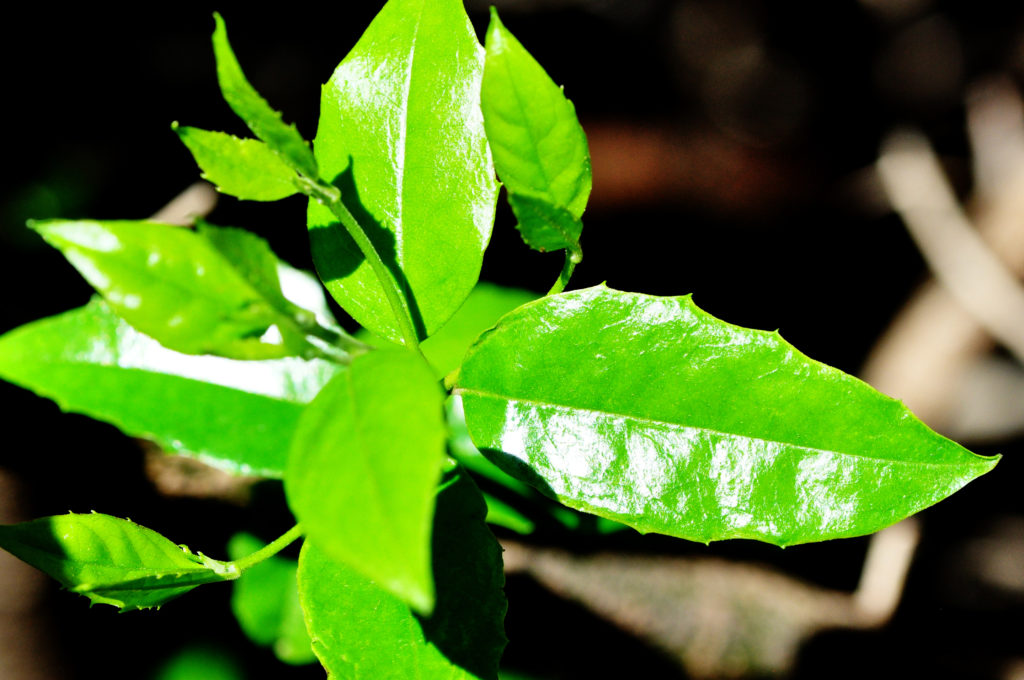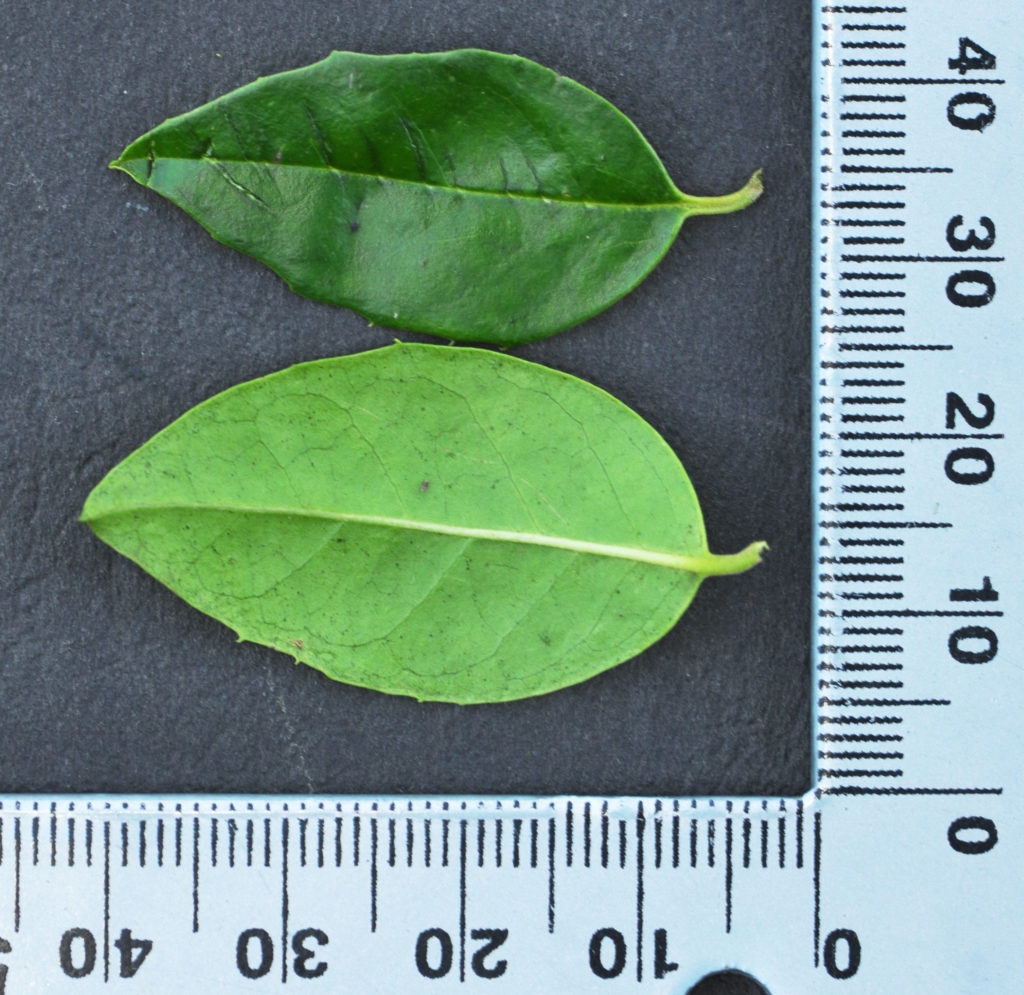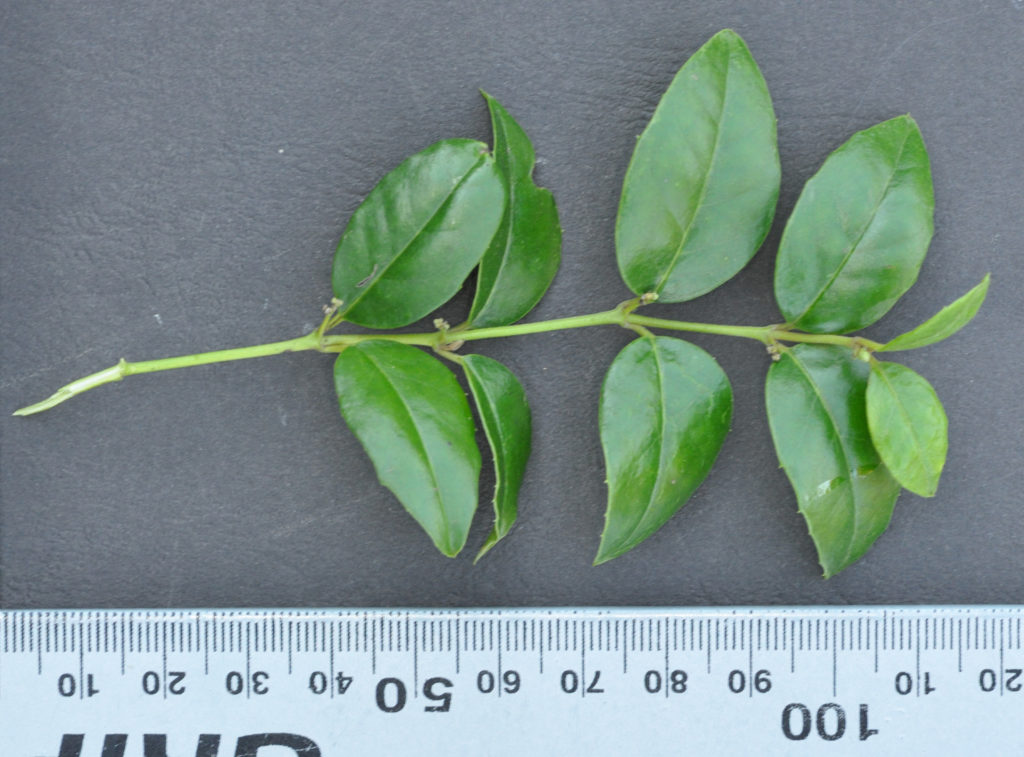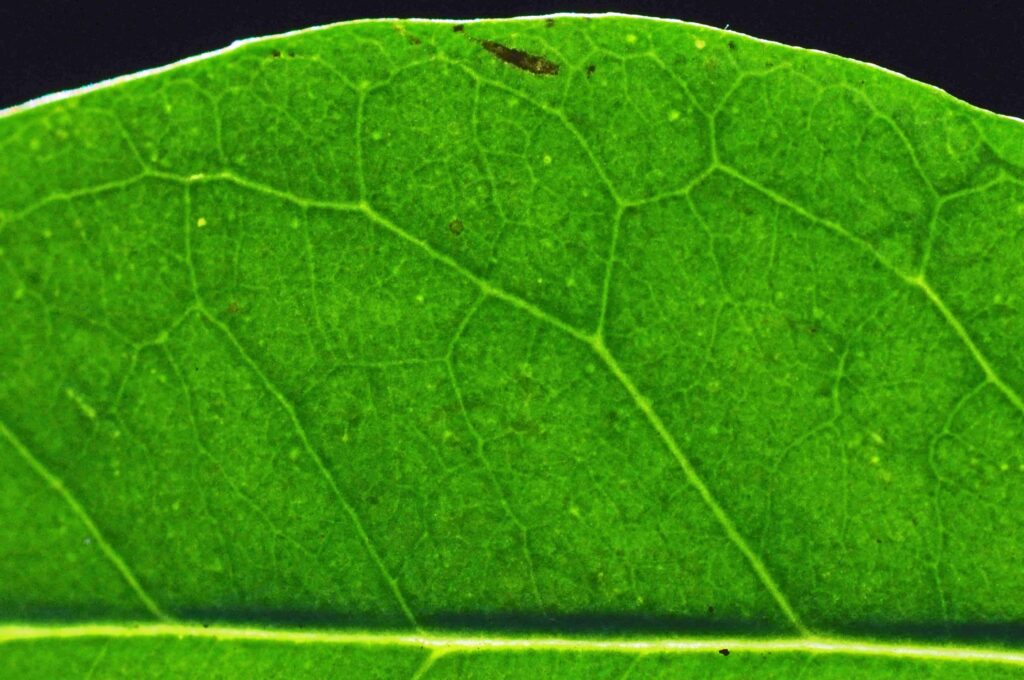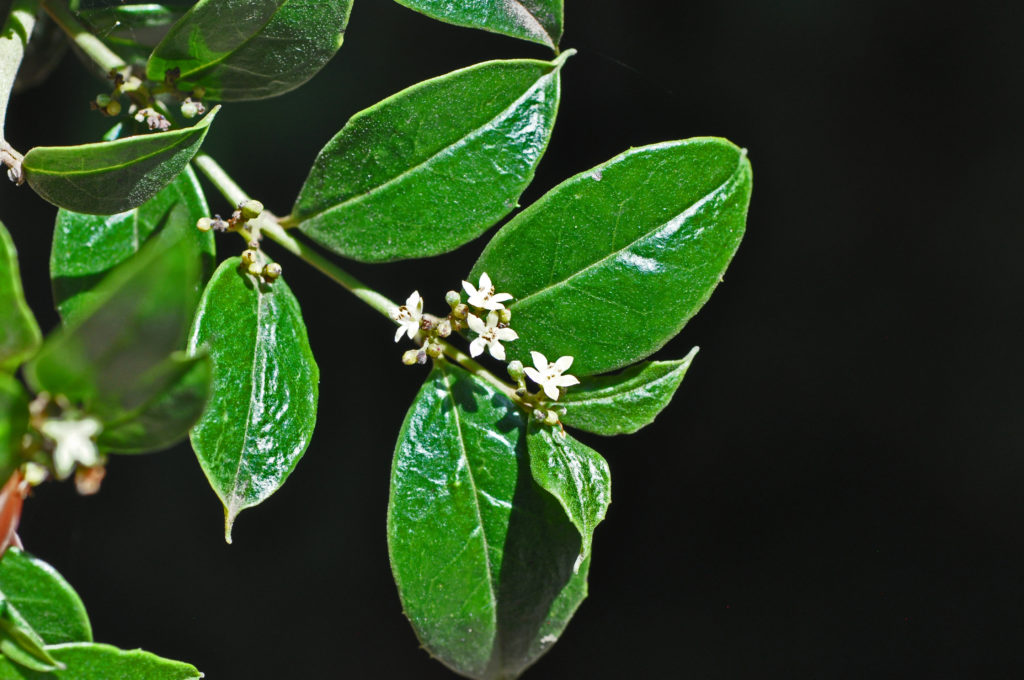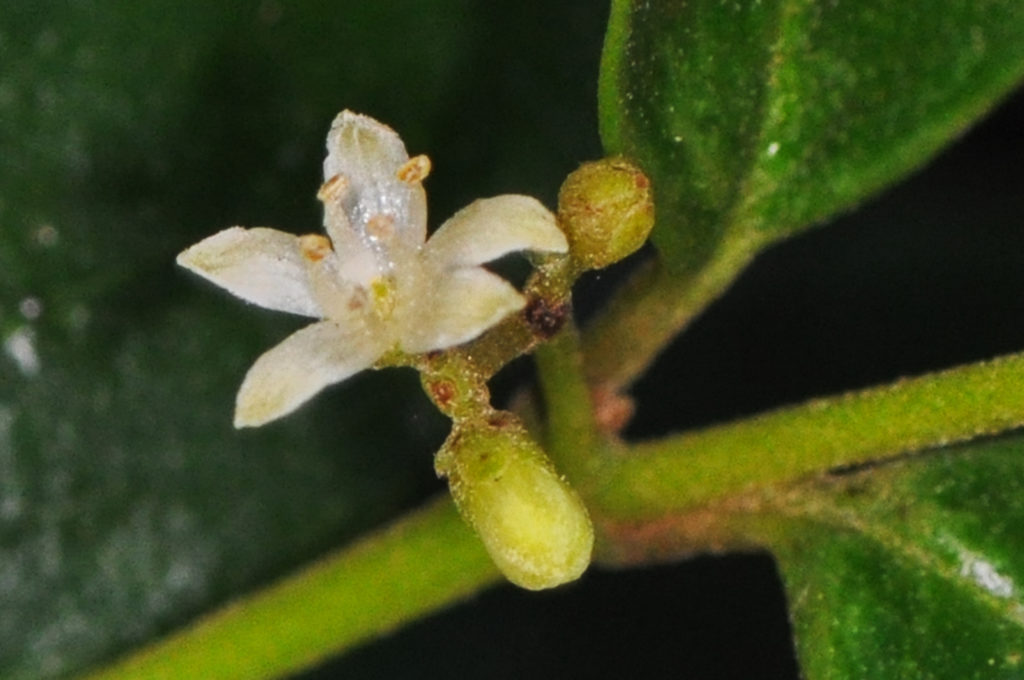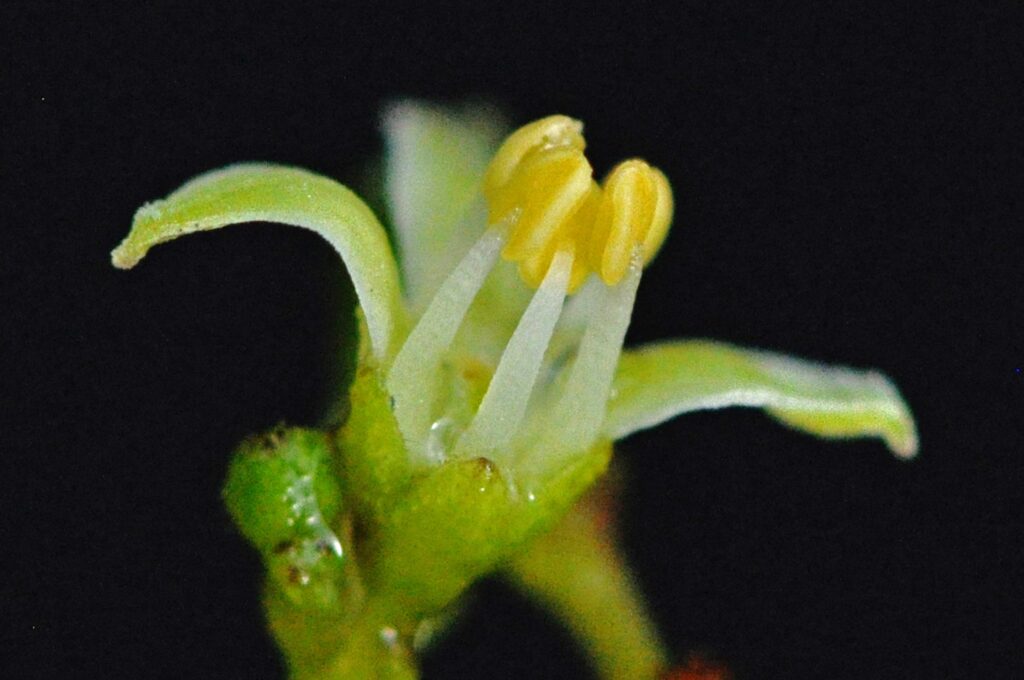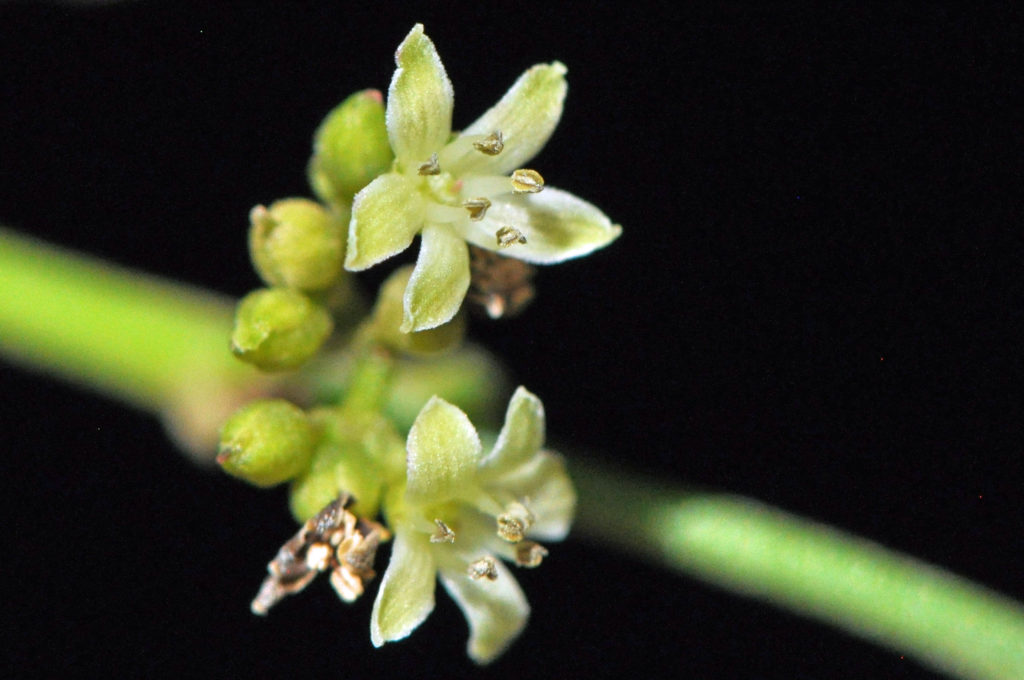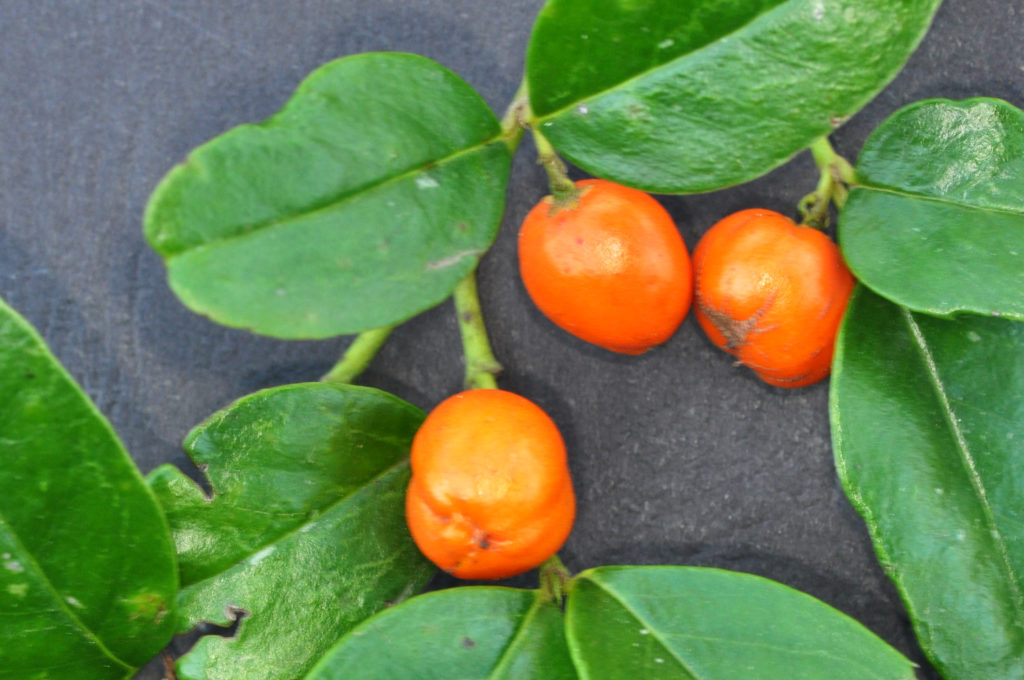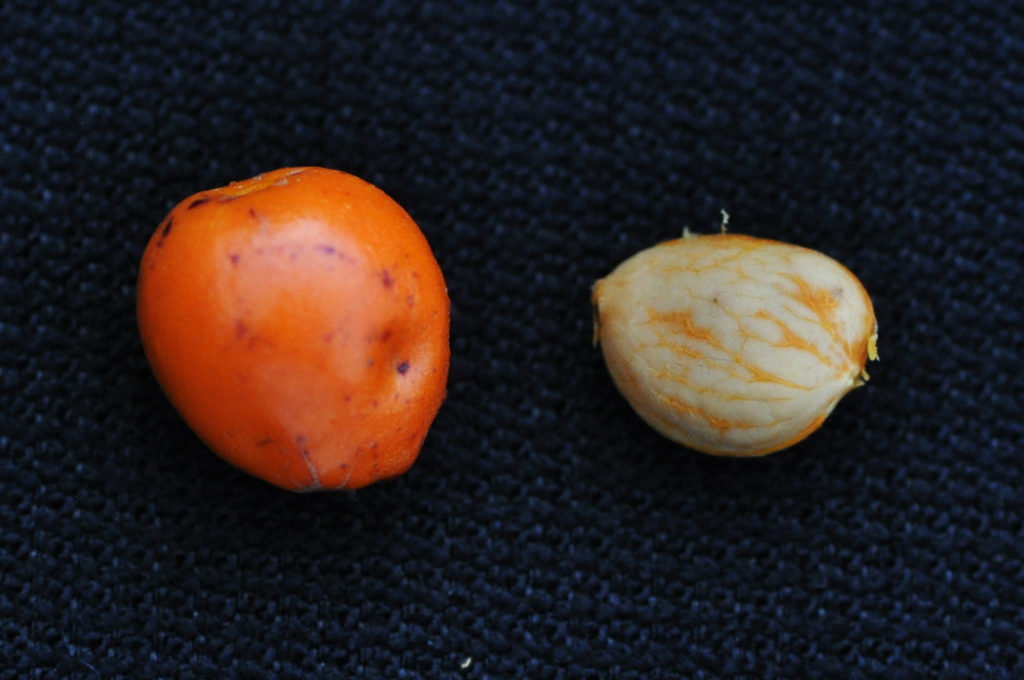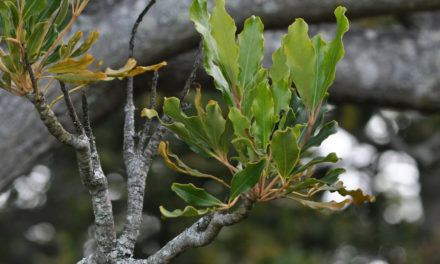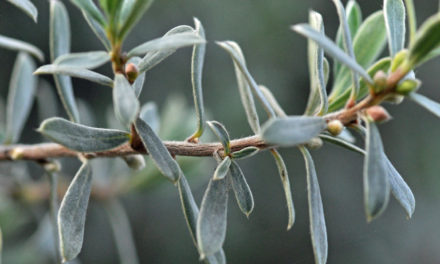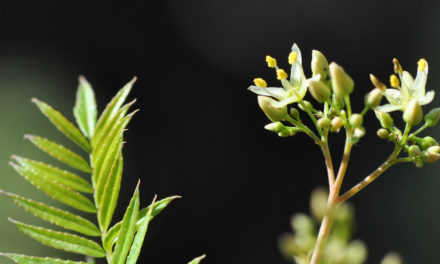General Info – summary
This small glabrous, evergreen plant, with trailing branches and single sharp spines up to 6cm long is usually a shrub or a Tree up to 6m high. The simple, shiny and opposite Leaves lack stipules. Small, whitish, bisexual, regular and 5-merous Flowers arise in panicles between leaf axils. Filaments are subterete & the 1-locular ovary is superior. Fruit is an orange, single seeded drupe with a persistent style.
Description
Cassinopsis ilicifolia
Previous Names: Hartogia ilicifolia, Cassinopsis capensis.
SA Tree No. 420.
Common names: (Afr) Lemoendoring, Lemoentjiedoring. (Eng) Holly Cassinopsis, Lemon Thorn, Spiny Lemon, Wild Lemon. (siSwati) siHloko. (isiXhosa) Icegceya, Igcegceleya, Ikhumalo, Isibethankunzi-sehlathi, Ukhovothi. (isiZulu) Eluhlaza, Ihlazane, Ikhumalo, Imamba, Imamba-eluhlaza, Isanhloko, Isihlokolozane.
Family: Icacinaceae. After recent studies, many genera in this family have been moved to other families. There are currently 23 genera and 160 species. The remaining plants have simple, evergreen Leaves that are opposite or alternate, and lack stipules. Flowers usually have up to 3 bracts present. Flowers are usually actinomorphic and bisexual. The free Filaments are shorter than the longitudinally dehiscent Anthers. When present, a simple Style is attached to the superior 1-locular Ovary. The Fruit is a Drupe and usually contains a single Seed. There are 2 species of the genus Cassinopsis in South Africa. The other is Cassinopsis tinifolia, which has no spines and black fruit.
Name derivation: Cassinopsis – resembles Cassine (a genus of trees in the Celastraceae family). ilicifolia – leaves resemble those of Ilex (Holly).
Conservation: National Status: L C. (Least Concern). Assessment: 2005 (W. Foden and L. Potter).
Tree
This small glabrous (hairless) plant may grow up to 6m high, or may be a scrambling, spiny shrub/bush, which may, with its flexible branches, climb into the canopy. It is often as wide as high and is usually multi-stemmed with long, trailing branches. Young stems are bright glossy green (photo 855) and the Bark is pale grey to dark brown on older branches. Between the older pieces of bark, the underbark is visible as thin, lengthwise running whitish lines (photo 280). The long, flexible, trailing, zigzagging branches have single Spines up to 5cm that are long, slender, straight, and very sharp. They occur only on one side of a branch. These spines are the remains of old fruit stalks and occur between the petioles of the opposite leaves (photo 76 – under Leaves). Unlike Carissa, there is no milky latex present, and the spines are unpaired.
- 404 2014/12/09 Walter Sisulu NBG. Photo: David Becking.
- 855 2014/11/25 Walter Sisulu NBG. Photo: David Becking.
- 280 2014/07/24 Walter Sisulu NBG. Photo: David Becking.
Leaves
In this evergreen tree, the slightly leathery, thinly textured, shiny and hairless Leaves are simple (have a single blade that may have incisions that are not deep enough to divide the blade into leaflets). They are opposite (photo 546), narrowly ovate (egg-shaped) and up to 6 x 2,5cm (photo 547). The upper surface of the Blade is glossy green with indistinct veins. The lower surface is a dull, lighter green with a slightly more clearly defined venation (Midrib and Lateral veins). The distinction between the upper and lower surface is somewhat dependent on where and when the leaf is observed (photos 76 & 546). The venation is more clearly defined when the leaf is held against a strong light (photo 534). The Apex is attenuate (showing a long gradual taper) and may have a long drip-tip (photo 795 – under Flowers). The Base is broadly tapering. The Margin may be rolled under and, away from the base, often has sharp-tipped teeth (photo 857). The short Petiole (leaf stalk) is up to 8mm long and may be channelled above (photo 547). Stipules (basal appendages of the petiole) are absent.
- 76 2014/12/02. Walter Sisulu NBG. Photo: David Becking.
- 857 2014/11/25 Walter Sisulu NBG. Photo: David Becking.
- 547 2015/04/14 Walter Sisulu NBG. Photo: David Becking.
- 546 2015/04/14 Walter Sisulu NBG. Photo: David Becking.
- 534 2019/09/04 Walter Sisulu NBG. Photo: David Becking.
Flowers
The small (up to 5mm wide), inconspicuous, bisexual, white, yellowish or creamy green Flowers are actinomorphic (Regular, symmetrical. Flowers are vertically divisible into similar halves by more than 1 plane passing through the axis) and are best examined with a hand lens. Flowers that arise between leaf axils occur in compact dichotomously branched Panicles (an inflorescence in which the primary floral axis is branched, and these branches may branch again and again – each eventually ending in a flower). Leaves, flowers and spines all arise from a Node (joint from where the leaves may arise. The space between these 2 joints is called the internode). Flowers alternate from node to node, are opposite a spine and between two petioles (leaf stalks). Each flower is about 7mm in diameter, on a short Pedicel (stalk of a single flower) and is about 1cm long (photo 550). The green, 5-lobed Calyx (photo 315) is small. No Disc (a more or less fleshy or elevated development of the receptacle) is present. The Corolla has 5 whitish Petals that are longer than the sepals (photo 550). The 5 Stamens alternate with the petals and their anthers are initially yellowish (photo 315). The filaments are nearly circular in cross section. In photo 716, the change in the anthers over about a 3-week period is visible. Their Filaments are subterete (nearly circular in cross section). The single Pistil (a unit of the Gynoecium, the female element of the flower, composed of the Ovary, Style and Stigma) has a sessile, superior, pubescent (with dense fine, short, soft hairs, downy) and 1-Locular Ovary. It contains 2 pendulous ovules. (Sep-Feb+).
- 795M1 2015/04/21 Walter Sisulu NBG. Photo: David Becking.
- 550 2015/04/14 Walter Sisulu NBG. Photo: David Becking.
- 315 2018/01/16 Preoria NBG. Photo: David Becking. Dissected.
- 716 2018/02/06 Walter Sisulu NBG. Photo: David Becking.
Fruit
The slightly fleshy, smooth, ovoid and up to 1,3cm long Fruit is a slightly flattened Drupe (e.g., peach: a fleshy, 1-seeded indehiscent fruit with the seed enclosed in a stony endocarp – the inner layer of the pericarp or fruit wall). It becomes bright red or orange at maturity and terminates with the remains of the persistent Style (photo 557). Each drupe is about 1,3cm long and produces 1 small Seed (photo 768). Each seed has conspicuous endosperm (the starch and oil-containing tissue of many seeds; often referred to as the albumen). (Feb-May+).
- 557 2015/04/14 Walter Sisulu NBG. Photo: David Becking.
- 768 2017/02./07 Walter Sisulu NBG. Photo: David Becking.
Distribution & Ecology
This plant is a fringe-forest dweller and often occurs in high-altitude forests. It also occurs in shady areas near streams or/and rocks. The plants can tolerate light frost and drought (in severe conditions the leaves droop). These plants may also be canopy climbers. Trees occur in the Western and Eastern Cape, Eastern Free State, KwaZulu-Natal, Mpumalanga, Gauteng, Limpopo, Lesotho, and Zimbabwe. This plant is Endemic (endemism is the ecological state of a species being unique to a defined geographic location) in southern Africa. Guineafowl, starlings, barbets, franklins and bulbuls eat the Fruit. Duiker, kudu and klipspringer consume the Leaves. Galls with orange larvae are often visible.
Ethnobotany
This is a non-poisonous plant, and the Ripe Fruit is edible but cultivated plants have erratic fruiting. The Seeds may be worn as ornaments. Goats and cattle eat the Leaves. The Root system is non-aggressive. Propagation is by seeds that germinate easily. This somewhat slow growing plant is frost hardy and flourish in both full sun and shade.
References
Boon, R. 2010. Pooley’s Trees of eastern South Africa. Flora and Fauna Publications Trust, Durban.
Coates Palgrave, M. 2002. Keith Coates Palgrave Trees of Southern Africa, edn 3. Struik, Cape Town.
Foden, W. & Potter, L. 2005. Cassinopsis ilicifolia (Hochst.) Kuntze. National Assessment: Red List of South African Plants version 2020.1. Accessed on 2022/11/11.
Ginn P.J. Mcilleron W.G. and Milstein P. le S, 1989. The Complete Book of Southern African Birds. Struik, Cape Town.
Lawrence, G. H. M, 1951. Taxonomy of Vascular Plants. The Macmillan Company, New York. Tenth Printing 1965.
Palmer, E. & Pitman, N. 1972. Trees of southern Africa. Balkema, Amsterdam, Cape Town.
Schmidt, S. Lotter, M. & McCleland, W. 2002. Trees and Shrubs of Mpumalanga and the Kruger National Park. Jacana, Johannesburg.
van Wyk, B. & van Wyk, P. 1997 Field guide to Trees of Southern Africa. Struik, Cape Town.
http://www.plantzafrica.com/plantcd/cassinopilicifolia.htm
http://witkoppenwildflower.co.za/cassinopsis-ilicifolia/
http://posa.sanbi.org/flora/browse.php?src=SP
https://www.kew.org/science/tropamerica/neotropikey/families/Icacinaceae.htm

